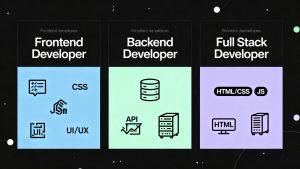Modern engineering teams frequently evaluate serverless and microservices architectures to improve the agility and scalability of complex applications. While both models aim to streamline development and efficiently scale resources, important distinctions shape their implementation and business fit.
Scalability and Automation
Both serverless and microservices frameworks support high scalability, enabling applications to accommodate increased user demand without sacrificing performance. Serverless solutions achieve this through automated scaling triggered by specific events, requiring minimal manual intervention. Microservices, in contrast, allow for individual service scaling, offering more granular control but also demanding additional configuration and management by developers.
Development Complexity and Agility
Microservices architecture requires each service or function to be independently built, tested, and deployed, typically leveraging containers and orchestration platforms such as Docker and Kubernetes. This customization promotes flexibility but can slow development cycles and increase oversight. On the other hand, serverless focuses on rapid deployment and agility by outsourcing infrastructure management to cloud service providers, allowing developers to concentrate solely on writing, packaging, and deploying application functions.
Infrastructure Management
A primary advantage of serverless architecture is the delegation of provisioning, scaling, and operational overhead to a third-party cloud provider. This lets developers focus exclusively on business logic and application code, with resources managed seamlessly behind the scenes. Code in a serverless environment operates closer to the end user, resulting in reduced latency and improved performance. By contrast, microservices demand that engineering teams manage the entire technology stack behind each deployed service, requiring deeper DevOps expertise and increased attention to infrastructure configuration.
Granularity and Application Structure
Both serverless and microservices decompose applications into smaller, more manageable units compared to monolithic architecture. However, microservices introduce independently deployable services, each encapsulating a dedicated business capability, while serverless architecture takes granularity a step further by organizing applications into discrete functions triggered by specific events. This approach enables even finer control, as individual functions can be executed independently only when activated.
Runtime Environment and State Management
Serverless platforms manage all underlying runtime infrastructure through the cloud provider, meaning that function state is ephemeral and data is discarded once execution completes. In contrast, microservices are commonly deployed on virtual machines or containers, allowing persistent state retention throughout the application lifecycle.
Cost Considerations
Serverless models are generally more cost-effective, charging organizations only for the actual number of function executions and consumed resources. Microservices, however, involve upfront costs for infrastructure and resources, regardless of utilization. This can lead to higher baseline expenses but may provide longer-term control over resource allocation for complex projects.
Combining Architectures: Serverless Microservices
Organizations are increasingly adopting hybrid models to leverage the strengths of both paradigms. In serverless microservices architectures, microservices are constructed as serverless functions, delivering high scalability and simplified integration with managed services. This approach reduces infrastructure management burdens and can improve overall cost-efficiency, while also introducing new challenges in defining function boundaries, mitigating “cold start” delays, and troubleshooting in distributed environments.
Common Challenges with Serverless Microservices
- Defining Function Boundaries: Determining the optimal scope for each function can be complicated, sometimes resulting in business logic being split across too many or too few functions.
- Performance Issues: Cold starts—momentary delays when idle functions are triggered—can impact response times, especially in high-traffic or real-time environments.
- Monitoring and Troubleshooting: With numerous discrete functions, tracing requests and identifying the root cause of issues can be significantly more complex.
Use Cases for Serverless and Microservices
As cloud adoption surges, both serverless and microservices models are finding broad applicability.
Serverless Use Cases
- AI and Machine Learning: Serverless enables event-driven AI applications, powering intelligent, real-time decision-making.
- Hybrid Cloud Environments: Serverless architectures add flexibility and scalability for hybrid deployments spanning public, private, and on-premises clouds.
- Big Data Analytics: Developers benefit from reduced operational complexity and lower costs for writing and deploying code-driven data applications.
Microservices Use Cases
- Cloud-Native Applications: Their distributed nature makes microservices ideal for cloud-based systems requiring component-level independence.
- Real-Time Data Processing: Microservices are suited for applications with real-time data needs, such as streaming or autonomous systems.
- IT Refactoring: Enterprises modernizing from traditional monolithic architectures often rely on microservices to improve agility and maintainability.
Deciding Which Architecture Fits Your Business
Selecting between serverless and microservices is a strategic decision influenced by application type, build speed, budget, infrastructure control, anticipated complexity, and the need for rapid iteration. Projects needing swift deployment and repeated changes may thrive on serverless, while those with complex, custom requirements may benefit from the tailored control of microservices architecture. Each approach has advantages and trade-offs; business leaders should evaluate organizational priorities before making a commitment.
Getting Started
Serverless platforms offer businesses a streamlined, cost-effective entry into cloud-native development. Tools like IBM Cloud Code Engine present a pay-as-you-use model, letting teams deploy serverless applications and workflows without advanced orchestration expertise, and enabling faster innovation in the digital landscape.
Read more such articles from our Newsletter here.



